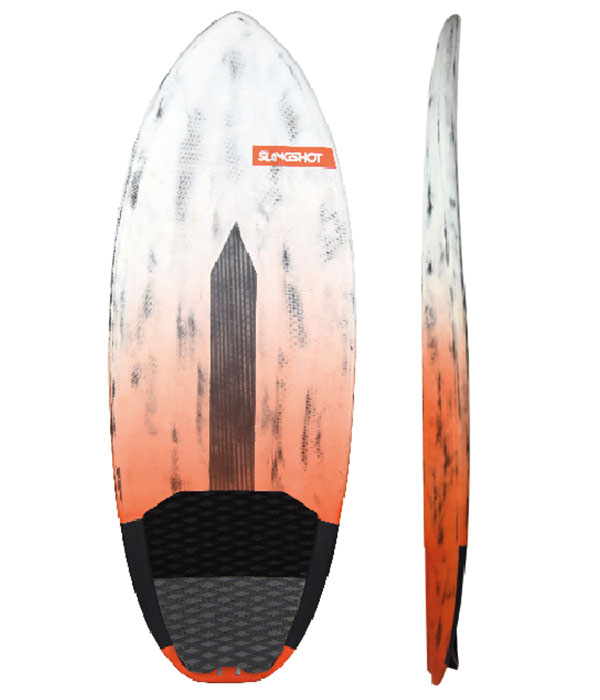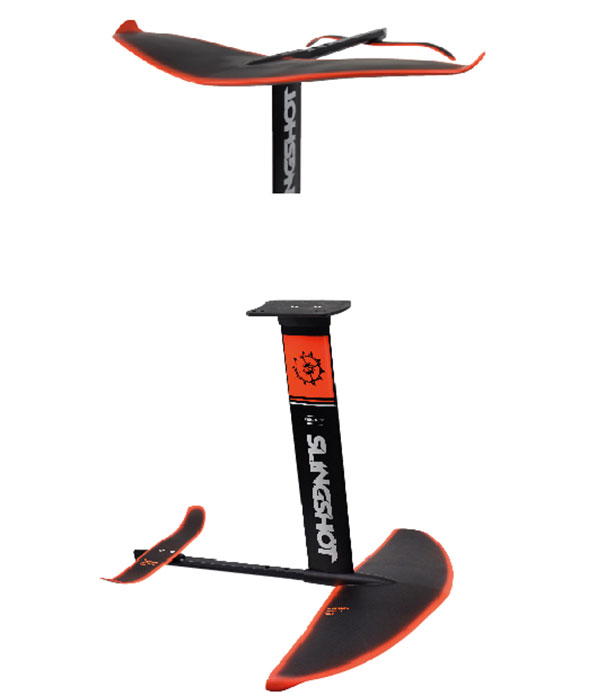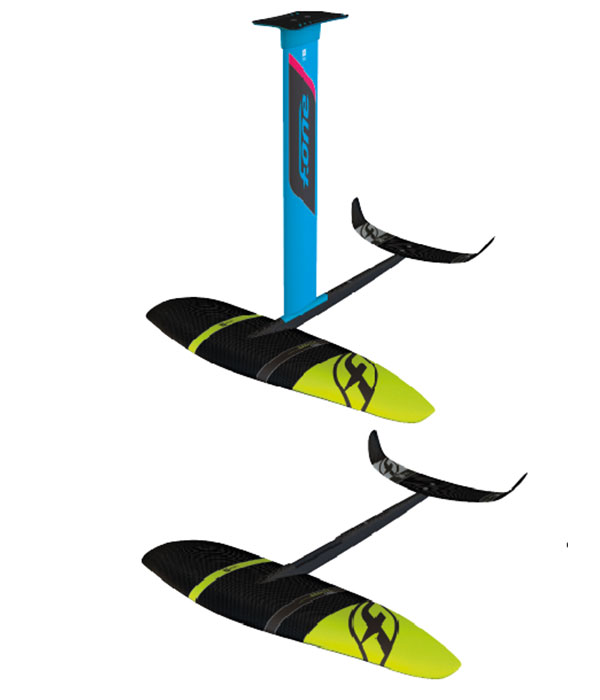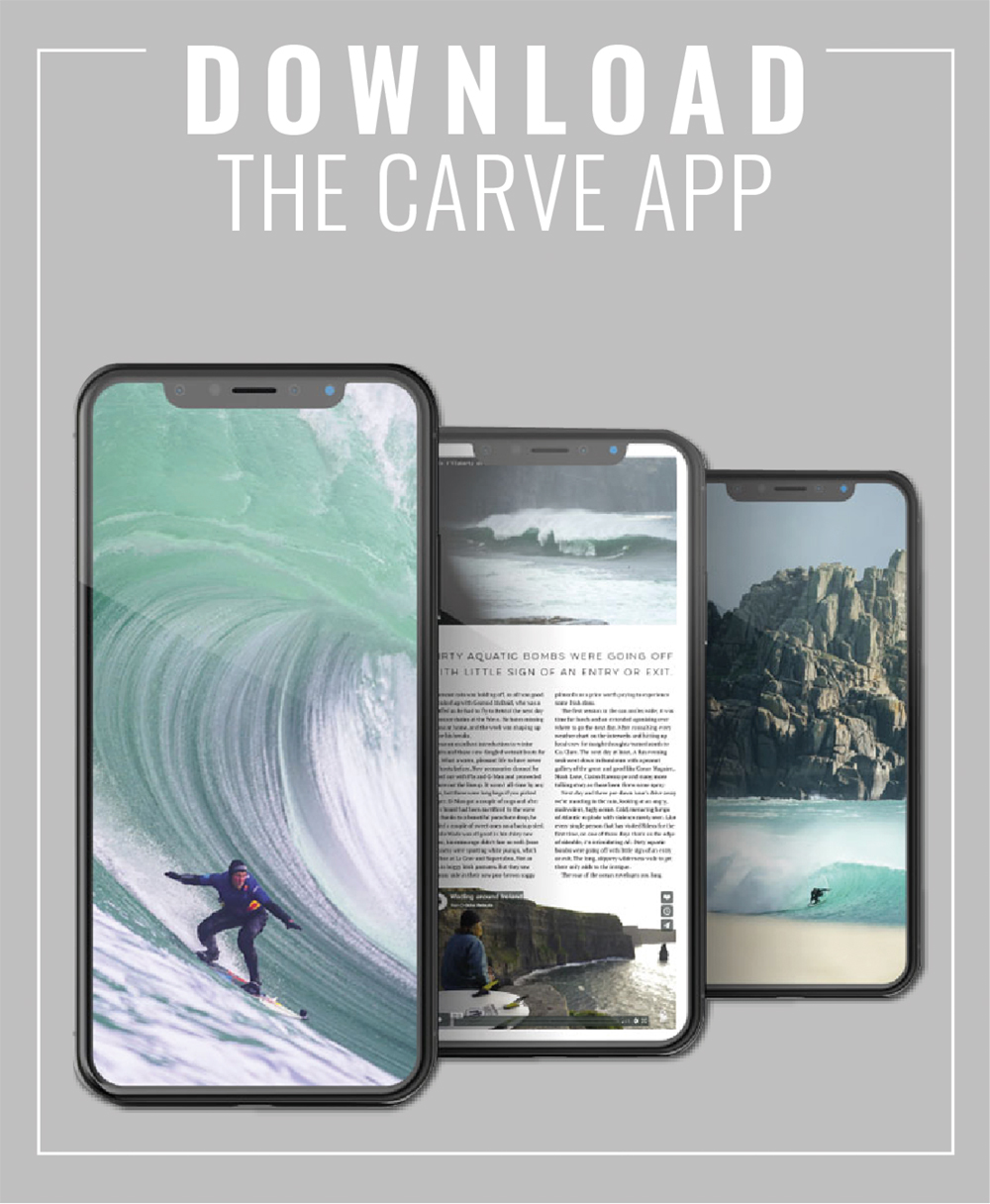
We have all seen those videos: Kai Lenny doing endless loops pumping around small wave breaks and riding for miles on open endless ocean swells. And we’ve heard the claims; “It’s like flying!” But what is going with foil boarding? And could they be the perfect alternative for tiny shitty waves? We asked two top foil companies and two surfers who have taken up the foil and fallen in love with them, Stokesy and Cotty, to find out.

ALAN STOKES
What drew you to foil surfing?
I love surfing and snowboarding as soon as I saw Kai Lenny surfing open ocean swells on a foil I thought it looked like snowboarding on water.
What are the advantages of having a foil?
It opens up so many places you couldn’t or wouldn’t even think of surfing before.
What is the best thing about it?
It feels like surfing, snowboarding and flying so when you do a carve it’s just an insane feeling!
How do you start? What equipment do you need? Do you have to buy a board and a foil? Are there any specifics you need to be aware of – board sizes/foil sizes?
You need to be able to surf quite well to surf foil. Starting is hard, and you need to start in small forgiving waves with a helmet on. It’s a steep learning curve so take your time and be safe. You will need a foil board similar size to your regular surfboard or smaller. I love the F One 5’0” Rocket surf foil board. Plus a large foil wing like the F One Gravity 1200.

How do you get going on one? Is it something you can learn on a lake or do you go straight the sea? I see some people use jet skis to get started?
It’s easier to learn the basics towed behind a boat to understand how the foil lifts and turns and then progress to surf.
Do start on paddle board foil board or a sup foil board?
If you surf, I think it’s easier to start on a surf foil board.
What are the best conditions for foiling?
To learn small crumbling swell in deep water.
What are your top tips for safety?
Go to beaches that are not crowded, wear a helmet and always move away from other surfers.
When you see people pumping around lakes or breaks … is that as easy as it looks?
Haha, no, trust me I’ve tried, but it’s fun when you get it right.

ANDREW COTTON
What drew you to foil surfing?
I originally was thinking of how to surf bigger waves so decided to learn the basics.
What are the advantages of having a foil?
Anything becomes surfable! I went from thinking about riding the biggest waves to the smallest. You end up looking at the ocean and the energy it has in a completely different way.
What is the best thing about it?
You feel like you’re flying. It’s hard to describe, but it’s addictive.
How do you start? What equipment do you need? Do you have to buy a board and a foil? Are there any specifics you need to be aware of – board sizes/foil sizes?
I went straight to the experts and asked for help, like learning anything new it’s essential that you’re on the right equipment and I had a clear progression planned. I was lucky, as I learnt behind the ski then took it to paddle in, as it’s harder learning just paddling in.

How do you get going on one? Is it something you can learn on a lake or do you go straight the sea? I see some people use jet skis to get started?
I went from behind the ski learning the very basics, then to towing into waves and progressing into paddling prone into foiling waves.
What are the best conditions for foiling?
Half a foot backing off unsurfable waves, basically you’re looking for the worst wave possible!
What are your top tips for safety?
Don’t try and correct yourself, if you think your falling, then fall! You don’t want to land on the foil. It hurts
What kind of waves/beaches are best for learning to foil? Did you start in smaller waves and work up?
It’s all about small waves, or surging water. Tap into the energy that before wasn’t rideable
When you see people pumping around lakes or breaks … is that as easy as it looks?
I wish it were! It’s so hard it’s unbelievable, but regardless it’s a lot of fun, and once you try it I guarantee you’ll be addicted.
Foiling Etiquette
There is a lot of talk about foils and the danger they pose both to their users and other water users. But as with all watercraft if used correctly and etiquette and safety are observed there should not be any problems. Here are few tips from the pros:
- Stay away from all other people in the water when learning to foil. You have a three-foot blade on the bottom of your craft. If you are not a pro, you are a danger in crowded conditions.
- Foils are better in swells rather than waves anyway.
- Always wear a leash, this protects others around you. Longboarders without leashes cause enough problems. Imagine a stray foil water.
- Wear a helmet and impact vest when first learning. Foiling is tough and has a long learning curve, and you will fall off, you will have to dodge your own foil. Be safe, not sorry.
- Do not take off with someone directly in front of you.
- When other surfers are present, go somewhere else and ride that part of the wave the surfers cannot ride or do not want to ride. This is the beauty of foiling.
- Heavier metal foils are more dangerous, so choose wisely as their momentum keeps them going after a fall and can hurt you or others around you.
- Make sure you pick the right board and foil for surfing.
- Be aware of submerged rocks and sandbanks
- Do not foil alone.
- All foilers should police other foilers who are being dangerous and educate them. If you see someone not sticking to the rules, point it out to them.
- Stay away from crowded surfing lineups.

everything you need to know to start foiling
How foils work and how to learn…
Just think of the foil as an underwater aeroplane. Point the plane up, it goes up, point the nose down, and it will go down! The key is maintaining speed and proper altitude. Get to the proper speed then “level off!”
What speed does the board need to get to before the foil lifts the board?
For average weight riders, the board and foil need to reach speeds of around 4-8 mph. Heavy riders will need to get more speed, and conversely lighter riders will need less. Riding regular surf (waves on the shoreline) will be easier to attain a foiling position as the wave is helping you.
Can I ride a foil if I have no experience?
Yes! For the first time foilers using a boat or jetski to pull you through the water at very slow speeds is the easiest way to learn. This will enable you to get the “feel of foiling”. Weight back on the board will lift foil up, and weight forward will bring the nose back down. Holding weight forward after “Lift Off” is the correct position or train of thought to maintain a proper foil glide.
If you don’t have access to skis or boats then when you’re in chest-deep water, start paddling out as you do on a regular board.
You can ride everything. Even the worst wave you’ve ever seen in your entire life. So the best way to get started is to find a spot with small waves in the one-to-two-foot range. The goal is to paddle into whitewater and, when you stand up, you’ll have all the power you need to ride the hydrofoil.
When you spot a wave coming, start paddling until you feel you’ve caught it. The take-off process on a foil board is identical to that of surfing. As soon as you stand up, apply pressure on your front foot, like if you were snowboarding on the slopes. The steeper the wave gets, the more you need to lean forward.
On your first rides, you’ll experience a different feel compared to regular surfing. You’ll need to adopt a squat stance while keeping your chest vertical and your shoulders wide open so that you maintain the right balance and you don’t fall.
The more you lean back on your back foot, the more the wing is going to tilt upright, creating more lift. In the opposite direction, the more apply weight on your front foot, the more the wing will dive underwater.

What type of waves should I learn on?
First and foremost, waves where other surfers are not. The last thing you want to do is put someone else in danger with your foil. To start small crumbly waves are the best. The goal is to catch the whitewater, get enough speed to pop up, then slowly increase back-foot pressure to get on-foil.
What kind of foil do I need?
For paddle-in surfing, you’ll want a foil with a relatively large front wing and plenty of early lift so you can get up and foiling easily on small waves. Slingshot’s Hover Glide FSurf foil comes stock with our Infinity 76 surf wing, which is perfect for all-around paddle-in surf foiling. The F-One Gravity 1400 wing is ideal to learn how to surf foil even in the smallest waves.
Can I use a surfboard I already own?
It depends. You’ll need a board with a dedicated foil box installed. Local shapers are tuning in to foiling, and many are starting to install track boxes for their customers, either in custom boards or existing boards with enough volume to be retrofitted with a box. If you look at a dedicated surf foil boards featured you’ll notice a few distinct design details that make a big difference. High volume and a thick, blocky tail are a big help in early takeoff and small, mushy waves.
What length mast is best for learning? (the mast is the length of the metal between the board and the foil.)
Start with a short mast. Shorter masts are easier to control, safer to learn with and will make a big difference in how fast you progress past the eating shit phase. For tow-in foiling or larger waves, a longer mast will allow for more speed and more vertical range.
How dangerous it?
Foils are sharp, and there’s no getting around it. They need to be, for efficiency and performance. So yes, there’s a level of risk that comes with it, especially when you add waves to the equation. If you take precautions (like wearing a full wetsuit, boots, a helmet and an impact vest or PFD) the risks are minimised, and once you get over the learning curve, they drop dramatically. Starting with a short mast in small, crumbly surf will make a big difference in keeping things safe and under control.
the equipment

Foil Board: High Roller
A new generation of foil surfboard designed specifically for paddle-in foil surfing, carving and pumping until your legs catch on fire. Unlike any surfboard you’ve ever ridden, the High Roller is packed with foil-specific features designed for easy paddling, early takeoff, cat-like agility and Superman pumpability.
Buoyant enough to paddle into tiny waves and compact enough to remain agile and playful once you are foiling, High volume “S-Rail” paddles like a board twice its length. The concave deck gives heel-toe leverage for responsive turning and carving. Compact, easy to travel with and transport.
RRP:
£1100 to £1200

FSurf Foil
Easy to catch waves and once you are up it rides waves effortlessly without the need for excessive “monkey pumping”. Unless of course, you want to pump, then go for it on the way out. There are plenty of foils out there with tons of lift, but they tend to be super slow and can’t keep up with most waves without pumping to generate speed. Faster foils, meanwhile, need more speed to get going and don’t work for the small, rolling waves foilers love so much. The FSurf package, equipped with our new INFINITY 76 wing, is the best of both worlds. A large outline provides all the low-end lift and pump-ability you’ll ever need, while its unique inverted gull wing shape allows for much faster top-end speeds than foils with similar surface area.
Features:
New Infinity 76 wing – tons of lift, tons of range. New carbon composite construction – more range and more efficient. Modular Hover Glide system. Shift fuse allows different connection for different performance. 61 cm (24”) Aluminum mast – sturdy, super durable, ideal size for surfing. Safe-T winglets prevent injury
RRP:
£1050


Foil Board: ROCKET Surfboard
Created exclusively for foil surfing, the F-ONE Rocket Surf line gather all the shape features that will help to get the most out of the foil.
Easy take-off and maximum freedom in flight, once in the air, shorter board length translates directly into more freedom and possibilities.
Enough volume is required to ensure the boards are accessible and facilitate the take-off. The Rockets, therefore, pack as much volume as decently possible into minimum board length. The result is a range of compact boards dispatched as follow: 4’2 (26.5l.) – 5’0 (35.5l.) – 5’8 (41l.) – 6’4 (52l.)
There is a size for everyone and every level from the pocket-size 4’2 intended for experts to foil with maximum freedom, to the 6’4 that boasts volume and width suitable for learning.
Parallel rails and flatter rocker line in the centre of the board make up for an easy and early take off. A distinctive kick in the rocker towards the tail helps with release and pumping. The outline is kept wide on the nose to keep these short boards user-friendly.
All boards are fitted with a both a US track system and a tuttle box to accommodate any foil with a tuttle head or a 4-bolt top plate.
They are built with a light and tough bamboo sandwich laminate around a lightweight EPS core, thereby achieving a great resistance to weight ratio. The boards come with a tail pad, while a front pad is included as an accessory which can be fitted on or not depending on personal preferences.
RRP: £705 -£750
Hydrofoil: GRAVITY 1400
The F-ONE GRAVITY 1400 wing is ideal to learn how to surf foil, enjoy the smallest waves and also venture on a downwinder.
It has a low-speed take-off and is very stable with superior glide and a new and thicker section profile for an early and very progressive lift-off evolution of the arch and rake of the wing to best combine manoeuvrability and control
The design targets ease of use to surf and carve lines with an early lift for take-off, easy entry into the turns for some intuitive lines, manoeuvrability allowing sharp turns. Very fluid through the turns, allowing to draw tight or long curves with good speed control and good pumping to go after the next wave.
Targeted at people who want a wing to foil on a variety of waves from small and mellow to taller and faster.
Area: 1480 cm3
Aspect Ratio: 4.3
RRP: £940





